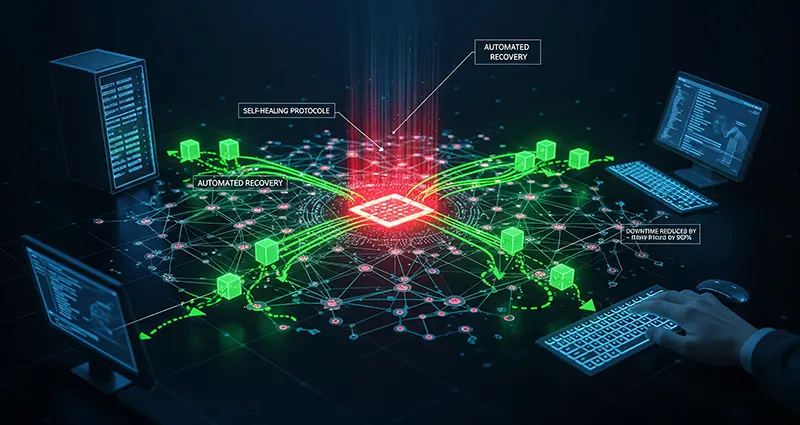In today’s digital era, network reliability is paramount. Businesses and service providers rely heavily on seamless connectivity to support critical operations, customer interactions, and data management. However, network failures and downtime remain persistent challenges that can lead to significant financial loss and operational disruption. To address these issues, the development of self-healing network systems has emerged as a transformative approach, aiming to reduce downtime and minimize the need for manual intervention.
What Are Self-Healing Network Systems?
Self-healing network systems are intelligent networks designed with automated mechanisms that detect faults, diagnose problems, and execute corrective actions without human involvement. Leveraging advanced technologies like artificial intelligence (AI), machine learning (ML), and real-time analytics, these systems continuously monitor the network’s health and proactively resolve issues before they escalate into major outages.
Benefits of Self-Healing Networks
- Reduced Downtime
Downtime in network operations can disrupt business processes, leading to lost revenue and poor user experience. Self-healing networks identify disruptions instantly and reroute traffic or rerun failed processes autonomously, significantly lowering the mean time to repair (MTTR) and keeping services running smoothly. - Minimized Manual Intervention
Traditional network management requires constant monitoring and manual troubleshooting, often delaying resolutions. Self-healing systems automate routine maintenance and problem-solving tasks, freeing IT personnel to focus on strategic initiatives rather than firefighting. - Enhanced Scalability & Flexibility
As networks grow more complex with hybrid cloud environments and IoT devices, manual management becomes increasingly challenging. Self-healing mechanisms enable networks to adapt dynamically to varying loads and configurations, ensuring consistent performance and security. - Cost Efficiency
Automated detection and repair reduce the need for large IT teams dedicated to monitoring and crisis management. This optimization not only decreases operational costs but also mitigates financial impact from service disruptions.
Key Technologies Driving Self-Healing Networks
- Artificial Intelligence & Machine Learning: AI algorithms analyze vast amounts of network data to identify patterns, predict failures, and suggest optimal recovery paths. ML models improve over time, refining their diagnostic accuracy and response effectiveness.
- Software-Defined Networking (SDN): SDN separates the control plane from the data plane, enabling centralized network control and automation. This architecture allows for rapid network reconfiguration in response to detected faults.
- Network Function Virtualization (NFV): NFV replaces traditional hardware devices with virtualized network functions, making it easier to deploy and repair components dynamically within the network.
- Real-Time Monitoring & Analytics: Continuous monitoring tools gather data on network performance and security, feeding into AI engines to spot anomalies and trigger healing protocols promptly.
Challenges and Future Directions
Developing robust self-healing network systems is not without challenges. Issues such as ensuring the security of automated actions, managing the complexity of heterogeneous network environments, and preventing false positives in fault detection require ongoing research and innovation.
Looking ahead, integrating edge computing and 5G technologies will further enhance the capabilities of self-healing networks, enabling real-time responses at the network edge and supporting mission-critical applications with near-zero downtime.
The development of self-healing network systems represents a significant leap forward in network management, promising to drastically reduce downtime and minimize the dependency on manual intervention. By harnessing AI, automation, and virtualization, these intelligent networks are setting new standards for reliability, efficiency, and resilience. As organizations continue to digitalize, investing in self-healing technologies will be key to ensuring uninterrupted service delivery, improved operational agility, and sustained competitive advantage.











